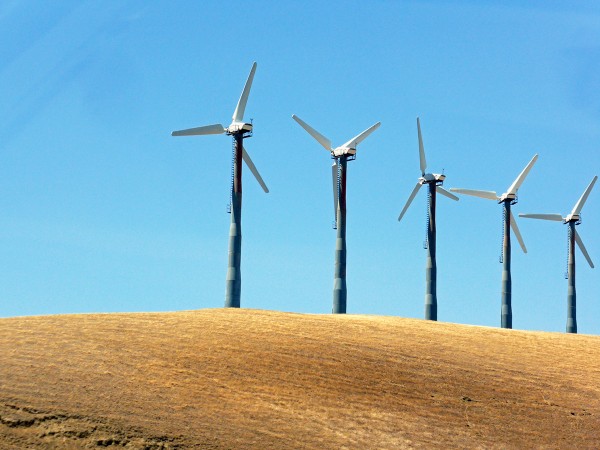 The Governor of California, Jerry Brown, has issued an executive order to cut greenhouse gas emissions 40% from 1990 levels by 2030 (a 44% cut on 2012 levels). This matches the target set by the EU. It is tougher than that of the US administration, which has set a target of reducing emissions in the range of 26 to 28 percent below 2005 levels by 2025.
The Governor of California, Jerry Brown, has issued an executive order to cut greenhouse gas emissions 40% from 1990 levels by 2030 (a 44% cut on 2012 levels). This matches the target set by the EU. It is tougher than that of the US administration, which has set a target of reducing emissions in the range of 26 to 28 percent below 2005 levels by 2025.
The former Governor of California, Arnold Schwarzenegger, had previously set a target of reducing emissions 80% below 1990 levels by 2050. Brown’s new target can be seen as an interim step toward meeting that longer-term goal.
There are several means by which it is planned to meet the Californian targets. These include:
a focus on zero- and near-zero technologies for moving freight, continued investment in renewables including solar roofs and distributed generation, greater use of low-carbon fuels including electricity and hydrogen, stronger efforts to reduce emissions of short-lived climate pollutants (methane, black carbon and fluorinated gases), and further efforts to create liveable, walkable communities and expansion of mass transit and other alternatives to travelling by car.
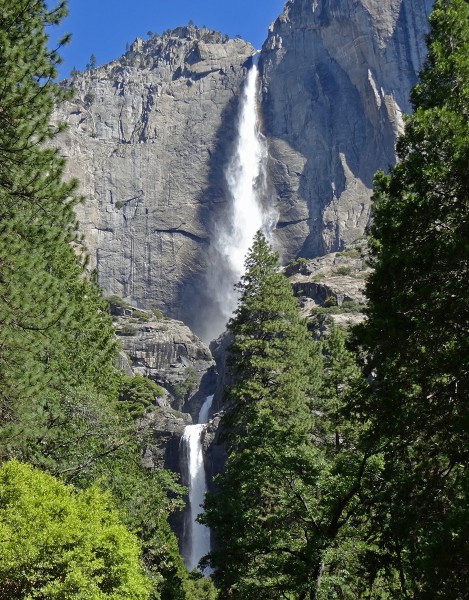 Some of these will be achieved through legislation, after consultations with various stakeholders. But a crucial element in driving down emissions is the California’s carbon trading scheme. This is a cap-and-trade system, similar to the EU’s Emissions Trading Scheme.
Some of these will be achieved through legislation, after consultations with various stakeholders. But a crucial element in driving down emissions is the California’s carbon trading scheme. This is a cap-and-trade system, similar to the EU’s Emissions Trading Scheme.
The cap-and-trade rules came into effect on January 1, 2013 and apply to large electric power plants and large industrial plants. In 2015, they will extend to fuel distributors (including distributors of heating and transportation fuels). At that stage, the program will encompass around 360 businesses throughout California and nearly 85 percent of the state’s total greenhouse gas emissions.
Under a cap-and-trade system, companies must hold enough emission allowances to cover their emissions, and are free to buy and sell allowances on the open market. California held its first auction of greenhouse gas allowances on November 14, 2012. This marked the beginning of the first greenhouse gas cap-and-trade program in the United States since the group of nine Northeastern states in the Regional Greenhouse Gas Initiative (RGGI), a greenhouse gas cap-and-trade program for power plants, held its first auction in 2008.
Since January 2014, the Californian cap-and-trade scheme has been linked to that of Quebec in Canada and discussions are under way to link it with Ontario too. Also California is working with other west-coast states/provinces, Oregon, Washington and British Columbia, to develop a co-ordinated approach to greenhouse gas reductions
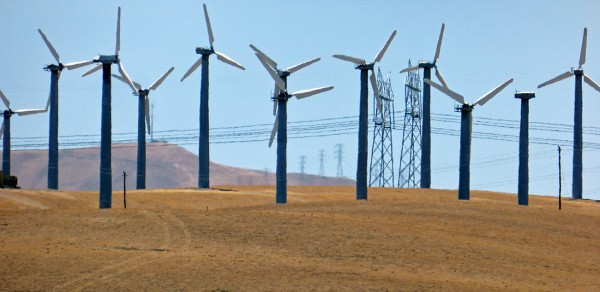 To achieve sufficient reductions in emissions, it is not enough merely to have a cap-and-trade system which, through trading, encourages an efficient reduction in emissions. It is important to set the cap tight enough to achieve the targeted reductions and to ensure that the cap is enforced.
To achieve sufficient reductions in emissions, it is not enough merely to have a cap-and-trade system which, through trading, encourages an efficient reduction in emissions. It is important to set the cap tight enough to achieve the targeted reductions and to ensure that the cap is enforced.
In California, emissions allowances are distributed by a mix of free allocation and quarterly auctions. Free allocations account for around 90% of the allocations, but this percentage will decrease over time. The total allowances will decline (i.e. the cap will be tightened) by 3% per year from 2015 to 2020.
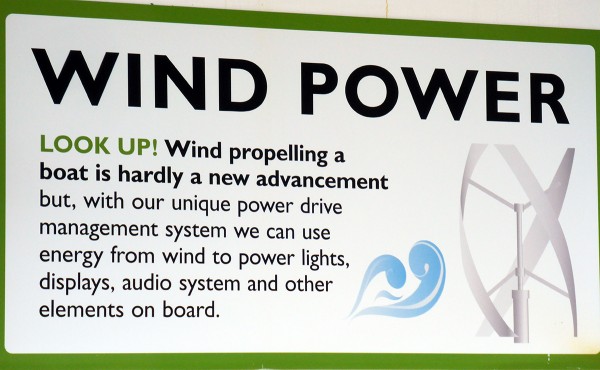 At present the system applies to electric power plants, industrial plants and fuel distributors that emit, or are responsible for emissions of, 25,000 metric tons of carbon dioxide equivalent (CO2e) per year or more. The greenhouse gases covered are the six covered by the Kyoto Protocol ((CO2, CH4, N2O, HFCs, PFCs, SF6), plus NF3 and other fluoridated greenhouse gases.
At present the system applies to electric power plants, industrial plants and fuel distributors that emit, or are responsible for emissions of, 25,000 metric tons of carbon dioxide equivalent (CO2e) per year or more. The greenhouse gases covered are the six covered by the Kyoto Protocol ((CO2, CH4, N2O, HFCs, PFCs, SF6), plus NF3 and other fluoridated greenhouse gases.
Articles
California governor orders aggressive greenhouse gas cuts by 2030 Reuters. Rory Carroll (29/4/15)
California’s greenhouse gas emission targets are getting tougher Los Angeles Times, Chris Megerian and Michael Finnegan (29/4/15)
Jerry Brown sets aggressive California climate goal The Desert Sun, Sammy Roth (29/4/15)
California’s Brown Seeks Nation-Leading Greenhouse Gas Cuts Bloomberg, Michael B Marois (29/4/15)
California sets tough new targets to cut emissions BBC News, (29/4/15)
California’s New Greenhouse Gas Emissions Target Puts Obama’s To Shame New Republic, Rebecca Leber (29/4/15)
Governor Brown Announces New Statewide Climate Pollution Limit in 2030 Switchboard, Alex Jackson (29/4/15)
Cap-and-trade comes to Orego Watchdog, Chana Cox (29/4/15)
Cap and trade explained: What Ontario’s shift on emissions will mean The Globe and Mail, Adrian Morrow (13/4/15)
California’s Forests Have Become Climate Polluters Climate Central, John Upton (29/4/15)
States Can Learn from Each Other On Carbon Pricing The Energy Collective, Kyle Aarons (28/4/15)
Executive Order
Governor Brown Establishes Most Ambitious Greenhouse Gas Reduction Target in North America Office of Edmund G. Brown Jr. (29/4/15)
Frequently Asked Questions about Executive Order B-30-15: 2030 Carbon Target and Adaptation California Environmental Protection Agency: Air Resources Board (29/4/15)
Californian cap-and-trade scheme
Cap-and-Trade Program California Environmental Protection Agency: Air Resources Board (29/4/15)
California Cap and Trade Center for Climate and Energy Solutions (January 2014)
Questions
- Explain how a system of cap-and-trade, such as the Californian system and the ETS in the EU, works.
- Why does a cap-and-trade system lead to an efficient level of emissions reduction?
- How can a joint system, such as that between California and Quebec, work? Is it important to achieve the same percentage pollution reduction in both countries?
- What are countries coming to the United Nations Climate Change conference in Paris in November 2015 required to have communicated in advance?
- How might game theory be relevant to the negotiations in Paris? Are the pre-requirements on countries a good idea to tackle some of the ‘gaming’ problems that could occur?
- Why is a cap-and-trade system insufficient to tackle climate change? What other measures are required?
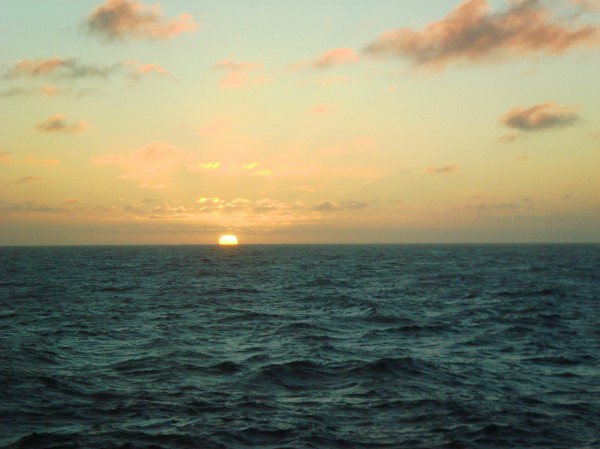 In many parts of the world, life in the oceans is dying out. The term ‘dead zones’ is used to describe seas that are devoid of marine life. And these zones are growing in size and number.
In many parts of the world, life in the oceans is dying out. The term ‘dead zones’ is used to describe seas that are devoid of marine life. And these zones are growing in size and number.
It’s not just the decline in fish and other marine species that’s worrying environmentalists and many others; it’s a growth in rubbish. Part of this is caused by natural disasters, such as the 2011 Tsunami in Japan that washed huge amounts of debris into the Pacific Ocean. But much of it is caused by rubbish carried down rivers and into the seas, or rubbish jettisoned from ships. The problem is particularly acute in areas of the oceans where currents circulate the rubbish into huge rubbish dumps. There are two such areas either side of Hawaii in the Pacific. Both are vast.
The first article below tells the tale of Newcastle (Australia) yachtsman Ivan Macfadyen. He completed the 2013 Melbourne to Osaka double handed yacht race earlier this year as skipper of his yacht Funnelweb and then went on to bring the yacht home to Australia via America and race the famous Trans-Pac Yacht Race from Los Angeles to Hawaii along the way.
Exactly 10 years before, when [he] had sailed exactly the same course from Melbourne to Osaka, all he’d had to do to catch a fish from the ocean between Brisbane and Japan was throw out a baited line.
“There was not one of the 28 days on that portion of the trip when we didn’t catch a good-sized fish to cook up and eat with some rice,” Macfadyen recalled. But this time, on that whole long leg of sea journey, the total catch was two. No fish. No birds. Hardly a sign of life at all.
After reaching Osaka in Japan, they sailed on to San Francisco via Hawaii.
“After we left Japan, it felt as if the ocean itself was dead,” Macfadyen said. “We hardly saw any living things. We saw one whale, sort of rolling helplessly on the surface with what looked like a big tumour on its head. It was pretty sickening.”
“I’ve done a lot of miles on the ocean in my life and I’m used to seeing turtles, dolphins, sharks and big flurries of feeding birds. But this time, for 3000 nautical miles there was nothing alive to be seen.”
In place of the missing life was garbage in astounding volumes.
As economists, you should readily understand that here we have a case of over-exploited common resources – a Tragedy of the Commons of epic proportions. One ship’s rubbish may make a tiny difference, but when the cost of dumping is near zero and when the oceans are not policed, what is rational for a single ship becomes a disaster when repeated tens of thousands of times by other ships
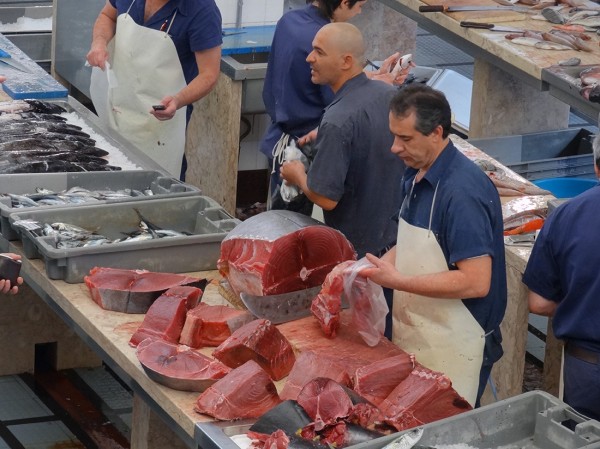 Again, overfishing is the result of seemingly rational behaviour by crews of individual fishing boats. But as Economics (8th edition) points out on pages 328–30:
Again, overfishing is the result of seemingly rational behaviour by crews of individual fishing boats. But as Economics (8th edition) points out on pages 328–30:
Common resources are not owned but are available free of charge to anyone. Examples include the air we breathe and the oceans for fishing. Like public goods, they are non-excludable. For example, fishing boats can take as many fish as they are able from the open seas. There is no ‘owner’ of the fish to stop them. As long as there are plentiful stocks of fish, there is no problem.
But as more people fish the seas, so fish stocks are likely to run down. This is where common resources differ from public goods. There is rivalry. One person’s use of a common resource diminishes the amount available for others. This result is an overuse of common resources. This is why fish stocks in many parts of the world are severely depleted, why virgin forests are disappearing (cut down for timber or firewood), why many roads are so congested and why the atmosphere is becoming so polluted (being used as a common ‘dump’ for emissions). In each case, a resource that is freely available is overused. This has become known as the tragedy of the commons.
… When I use a common resource, I am reducing the amount available for others. I am imposing a cost on other people: an external cost. If I am motivated purely by self-interest, I will not take these external costs into account.
Try doing some research to find out just what has been happening to the state of the oceans in recent years.
Articles
The ocean is broken Newcastle Herald (Australia), Greg Ray (18/10/13)
Our Planet Is Exploding With Ocean Dead Zones Business Insider, Dina Spector (26/6/13)
Health of oceans ‘declining fast’ BBC News, Roger Harrabin (3/10/13)
Chaos in the Oceans Huffington Post, Evaggelos Vallianatos (14/10/13)
Ocean Health Suffers from Overfishing, Index Finds Live Science, TechMedia, Douglas Main (16/10/13)
Information
Dead zone (ecology) Wikipedia
Common Fisheries Policy Wikipedia
Reform of the Common Fisheries Policy Fisheries DG, European Commission
Ocean Health Index OHI
Questions
- How does a common resource differ from a public good?
- What is the equilibrium use of a common resource? Demonstrate this with a diagram.
- What is the socially efficient use of a common resource such as a fishing ground?
- In what ways have modern ‘industrial’ methods of fishing compounded the problem of the overuse of fishing grounds?
- What criteria, other than social efficiency, could be used to determine the optimal use of a common resource?
- Explain how the Common Fisheries Policy of the EU works. Are there any lessons that can be learned by other groups of countries from the experience of the CFP?
- Are there any ‘good news’ stories about the state of any of the oceans? If so, to what extent are they the result of deliberate human action?
- To what extent is the Internet a common resource?
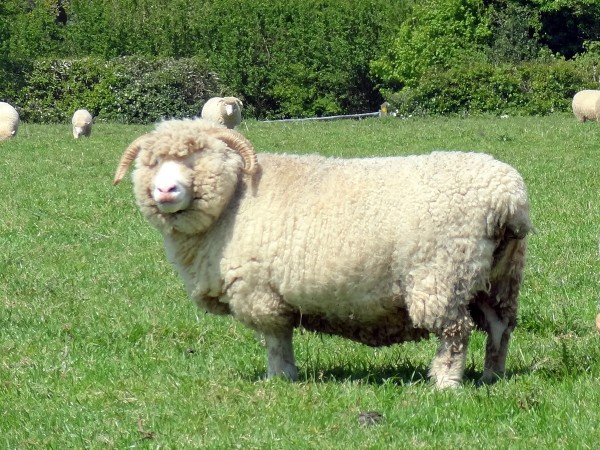 The European Parliament, Council and Commission have agreed on reform to the Common Agricultural Policy as part of the EU’s long-term budget settlement for 2014–20. The CAP accounts for some 38% of the EU’s budget and, over the years, has drawn considerable criticism for resulting in food mountains and support being biased towards large intensive farms.
The European Parliament, Council and Commission have agreed on reform to the Common Agricultural Policy as part of the EU’s long-term budget settlement for 2014–20. The CAP accounts for some 38% of the EU’s budget and, over the years, has drawn considerable criticism for resulting in food mountains and support being biased towards large intensive farms.
As section 3.5 in Economics (8th ed) explains, the CAP has been through a number of reforms since the early 1990s. Prior to that, the main form of support was that of guaranteed minimum prices backed up, where necessary, by levies (tariffs) on imported food. Any surplus of production at the minimum price was bought by the relevant EU Intervention Board and either stored or exported at world prices. The effect of minimum prices is shown in the diagram.
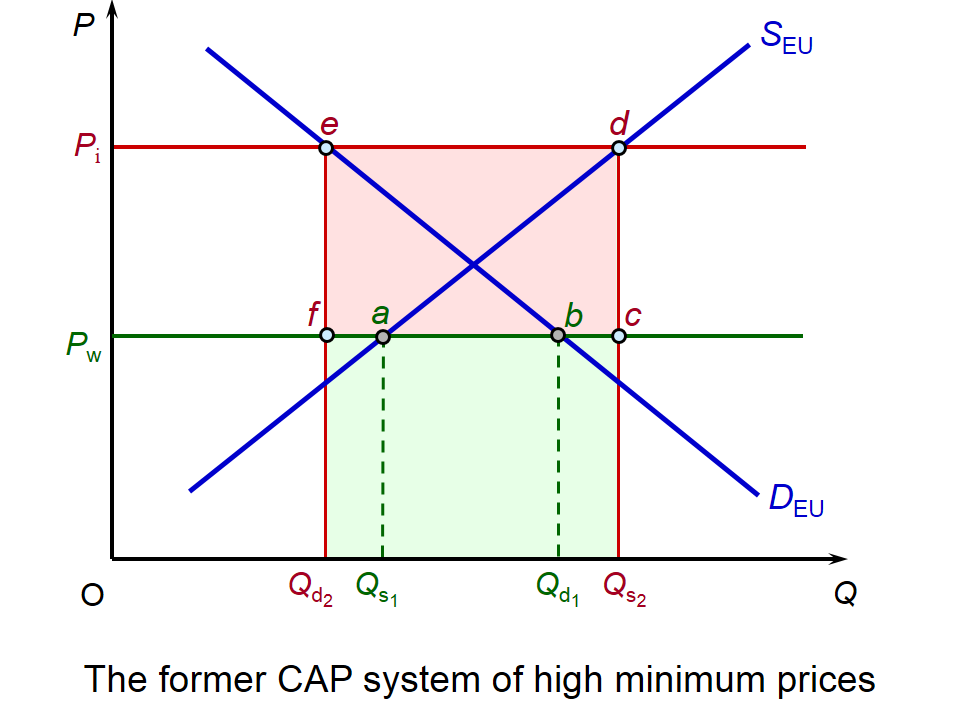 Assume that the EU demand is DEU and that EU supply is SEU. Assume also that the world price is Pw. This will be the equilibrium price, since any shortage at Pw (i.e. b – a) will be imported at that price. Thus before intervention, EU demand is Qd1 and EU supply is Qs1 and imports are Qd1 – Qs1.
Assume that the EU demand is DEU and that EU supply is SEU. Assume also that the world price is Pw. This will be the equilibrium price, since any shortage at Pw (i.e. b – a) will be imported at that price. Thus before intervention, EU demand is Qd1 and EU supply is Qs1 and imports are Qd1 – Qs1.
Now assume that the EU sets an intervention price of Pi. At this high price, there will be a surplus of d – e (i.e. Qs2 – Qd2). Assume for the moment that none of this surplus is exported. It will all, therefore, be bought by the appropriate Intervention Board. The cost to the EU of buying this surplus is shown by the total shaded area (edQs2Qd2: i.e. the surplus multiplied by the intervention price). Unless the food is thrown away, exported or otherwise disposed of, there will obviously then be the additional costs of storing this food: costs that were very high in some years as wine ‘lakes’ and grain and dairy ‘mountains’ built up. If, however, the surplus is sold on world markets at the world price Pw, this will earn the green area for the EU, leaving a net cost of just the pink area.
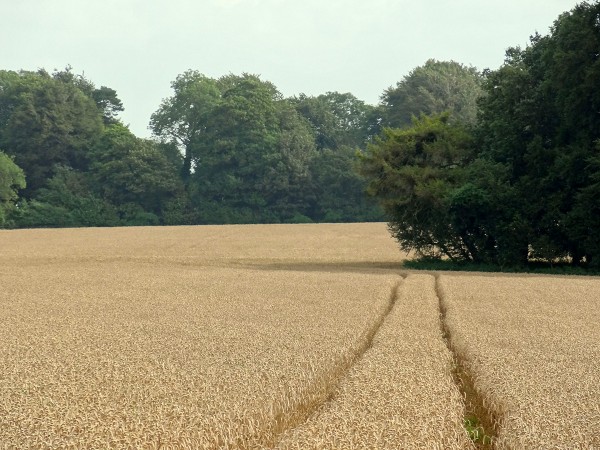 From 1992, there was a gradual move towards lowering intervention prices and paying farmers direct aid unrelated to current output. From 2004, the main form of support became these direct aid payments. Annual payments to each farm were based on the average support it had received over the three years from 2000 to 2002. At the same time, payments to large farms were gradually reduced, with 80 per cent of the money saved in each country being diverted to rural development. Payments were also made conditional on farmers making environmental improvements to their land.
From 1992, there was a gradual move towards lowering intervention prices and paying farmers direct aid unrelated to current output. From 2004, the main form of support became these direct aid payments. Annual payments to each farm were based on the average support it had received over the three years from 2000 to 2002. At the same time, payments to large farms were gradually reduced, with 80 per cent of the money saved in each country being diverted to rural development. Payments were also made conditional on farmers making environmental improvements to their land.
A problem with this system is that farmers who had high average output in the years 2000–2 have been receiving the same large payments ever since, while farmers who had small yields in those years have received correspondingly small payments.
A proposal two years ago by Dacian Cioloş, the EU Commissioner for Agriculture, was for flat-rate payments per hectare. But objections were raised that this would benefit inefficient farmers who would receive the same as efficient ones. In the end a compromise agreement was reached which saw a capping of the amount of payment per hectare. The result is that the most intensive farmers will see a reduction in their payments by some 30% – a process that will happen gradually over the period 2014–19.
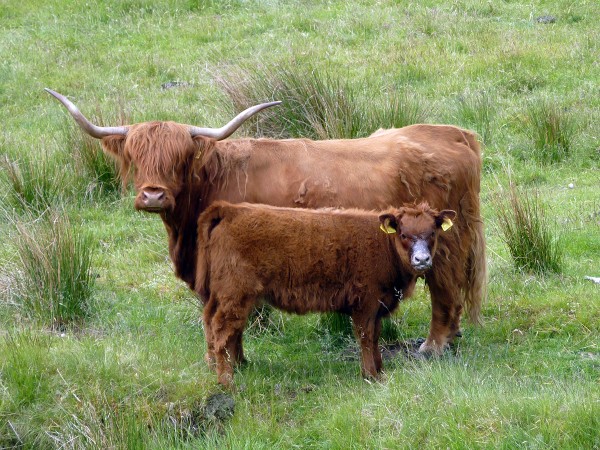 In addition it has been agreed that 30% of the direct aid payments will be conditional on farmers adopting various measures to protect the environment and wildlife.
In addition it has been agreed that 30% of the direct aid payments will be conditional on farmers adopting various measures to protect the environment and wildlife.
Farmers will have to be ‘active’ producers to receive direct aid payments. This is designed to exclude businesses such as airports or sports clubs, some of which had been receiving support under the previous system.
It was also agreed to provide 25% extra support for five years to farmers under 35 in an attempt to attract more young farmers into agriculture. Other details of the settlement are given in the EU documents, videos and articles below.
Webcasts
 The great shake-up of the Common Agricultural Policy EPP Group in the European Parliament (25/1/13)
The great shake-up of the Common Agricultural Policy EPP Group in the European Parliament (25/1/13)
 Planned reforms of Common Agricultural Policy under fire BBC News, Roger Harrabin (24/6/13)
Planned reforms of Common Agricultural Policy under fire BBC News, Roger Harrabin (24/6/13)
 Mixed response to compromise CAP deal RTE News (26/6/13)
Mixed response to compromise CAP deal RTE News (26/6/13)
 Farm reforms may not increase food production, warns MEP europeandyou, Diane Dodds MEP (26/6/13)
Farm reforms may not increase food production, warns MEP europeandyou, Diane Dodds MEP (26/6/13)
Articles
Big farms to see European subsidies slashed The Telegraph, Rowena Mason (26/6/13)
Common Agricultural Policy deal agreed at last RTE News, Damien O’Reilly (26/6/13)
CAP Reform: MEPs, Council and Commission strike deal FarmingUK (27/6/13)
EU agricultural overhaul puts onus on farmers to be green Financial Times, Joshua Chaffin (26/6/13)
CAP reform deal agreed in Brussels Farmers Guardian, Alistair Driver (26/6/13)
‘Bad for farmers and wildlife’ – CAP reform reaction Farmers Guardian, Alistair Driver (27/6/13)
EU documents
Political agreement on new direction for common agricultural policy Europa Press Release (26/6/13)
CAP Reform – an explanation of the main elements Europa Press Release (26/6/13)
Press release, 3249th Council meeting : Agriculture and Fisheries The Council of the European Union (25/6/13)
Questions
- Why will a system of agricultural support based solely on direct aid not result in any food mountains?
- Show in a diagram the effect of high minimum prices (plus import levies) on an agricultural product in which a country is not self-sufficient (and is still not made so by the high minimum price). How much will be imported before and after the intervention?
- What are the arguments for and against making direct aid payments based solely per hectare?
- Find out how sugar quotas have worked. What will be the effects of abolishing them by 2017?
- What ‘green’ measures are included in the agreement and how effective are they likely to be?
- Consider the arguments for and against removing all forms of support for agriculture in the EU.
- What are the effects of (a) price support and (b) direct aid payments unrelated to output for EU farmers on farmers in developing countries producing agricultural products in competition with those produced in the EU?
- Why may the environmental measures in the new agreement be seen as too weak?
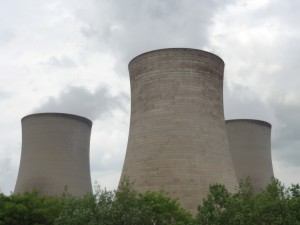 EU environmental legislation is beginning to cause problems in the UK. As it prohibits coal-fired power plants from generating power, they will be forced to close. This means that the UK will be forced to rely more on imported energy, which could lead to price rises, as energy shortages emerge.
EU environmental legislation is beginning to cause problems in the UK. As it prohibits coal-fired power plants from generating power, they will be forced to close. This means that the UK will be forced to rely more on imported energy, which could lead to price rises, as energy shortages emerge.
Ofgem, the energy regulator has said that the risk of a gas shortage is likely to be at its highest in about 3 years time, as the amount of spare capacity is expected to fall from its current 14% to just 4%. Energy shortages have been a concern for some time, but the report from Ofgem indicates that the predicted time frame for these energy shortages will now be sooner than expected. Ofgem has said that the probability of a black-out has increased from 1 in 3,300 years now to 1 in 12 years by 2015.
The government, however, has said that its Energy Bill soon to be published will set out plans that will secure power supply for the UK. Part of this will be through investment, leading to new methods of generating energy. The Chief Executive of Ofgem, Alistair Buchanan said:
‘The unprecedented challenges in facing Britain’s energy industry … to attract the investment to deliver secure, sustainable and affordable energy supplies for consumers, still remain.’
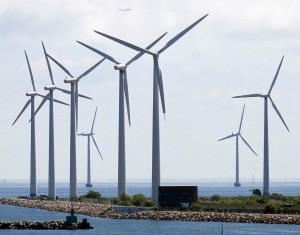 One particular area that will see growth is wind-farms: a controversial method of power supply, due to the eye-sore they present (to some eyes, at least) and the noise pollution they generate. But with spare capacity predicted to fall to 4%, they will be a much needed investment.
One particular area that will see growth is wind-farms: a controversial method of power supply, due to the eye-sore they present (to some eyes, at least) and the noise pollution they generate. But with spare capacity predicted to fall to 4%, they will be a much needed investment.
Perhaps of more concern for the everyday household will be the impact on energy prices. As we know, when anything is scarce, the price begins to rise. As energy shortages become more of a concern, the market mechanism will begin to push up prices. With other bills already at record highs and incomes remaining low, the average household is likely to feel the squeeze. The following articles and the Ofgem report considers this issue.
Report
Electricity Capacity Assessment Ofgem Report to Government, Ofgem (5/12/12)
Articles
Power shortage risks by 2015, Ofgem warns BBC News (5/10/12)
Britain faces risk of blackout The Telegraph (5/10/12)
Ofgem estimates tightening margins for electricity generation Reuters (5/10/12)
Electricity shortages are ‘risk’ by 2015 Sky News (5/10/12)
Future energy bills could give customers a nasty shock ITV News, Chris Choi (5/10/12)
Questions
- What is the role of Ofgem in the UK?
- Explain the way in which prices adjust as resources become more or less scarce. Use a demand and supply diagram to illustrate your answer.
- To what extent do you think the UK should be forced to close down its coal-fired plants, as a part of EU environmental legislation?
- Are there any market failures associated with the use of wind farms? Where possible, use a diagram to illustrate your answer.
- Explain why an energy shortage will lead to an increase in imports and how this in turn will affect energy prices.
- What are the government’s plans to secure energy provision in the UK? Do you think they are likely to be effective?
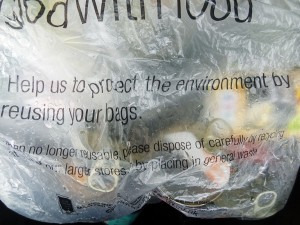 A campaign to introduce a tax on disposable plastic bags in England has been launched by various pressure groups, including The Campaign to Protect Rural England (CPRE), Keep Britain Tidy, the Marine Conservation Society and Surfers Against Sewage. Plastic bags, they maintain, litter streets and the countryside and pollute the seas, where they cause considerable damage to marine life.
A campaign to introduce a tax on disposable plastic bags in England has been launched by various pressure groups, including The Campaign to Protect Rural England (CPRE), Keep Britain Tidy, the Marine Conservation Society and Surfers Against Sewage. Plastic bags, they maintain, litter streets and the countryside and pollute the seas, where they cause considerable damage to marine life.
They propose a tax of 5p per bag, which would be passed on to consumers. Such a levy has already been introduced in Wales in October 2011. As a result, plastic bag use in Wales has dropped dramatically (see also the full report from the Welsh Government). The Scottish Government and the Northern Ireland Assembly are also planning introducing similar charges.
Many other governments have introduced taxes, charges or bans on plastic bags and many more are considering introducing such measures. Ireland introduced a 15 euro cent charge on single-use plastic bags as far back as 2002 and saw a 94% reduction in plastic bag use (328 per person per year to 21). The charge was raised to 22 euro cents in 2007 after bag use rose to 30 per person.
Other countries have banned plastic bags altogether: some, such as Rwanda and Somalia have banned all plastic bags; others, such as China and South Africa have banned very thin bags; others, such as Italy, have banned non-biodegradable ones.
In the USA, various states or districts have introduced levies and in the EU, where more than four billion bags are thrown away each year, the European Commission will soon publish proposals for limiting the use of plastic bags.
So what are the arguments for limiting the use of plastic bags? Why is it not enough to leave things simply to the market? And if the use of plastic bags is to be reduced, what’s the most efficient way of doing so? Are there any problems with alternatives to plastic bags? The following articles and reports consider these questions?
Articles
England urged to pick up Wales’ plastic bag levy businessGreen, Jessica Shankleman (1/8/12)
Wales’ plastic bag charge yields massive green savings businessGreen, Jessica Shankleman (5/7/12)
 Supermarkets ‘should charge £1 a bag’ BBC Today Programme, Samantha Harding and Judith Holder (2/8/12)
Supermarkets ‘should charge £1 a bag’ BBC Today Programme, Samantha Harding and Judith Holder (2/8/12)
Environmentalists team up to push for bag tax in England Plastics News, Anthony Clark (1/8/12)
Break the Bag Habit Keep Britain Tidy (1/8/12)
Plastic bag use ‘up for second year running’ Guardian, Rebecca Smithers (5/7/12)
Plastic bag use in Wales plummets due to 5p charge, figures show Guardian, Adam Vaughan (4/7/12)
Carrier bag charge ‘effective and popular’ figures reveal ITV News (4/7/12)
What should be done about plastic bags? BBC News Magazine, Chris Summers (19/3/12)
Irish bag tax hailed success BBC News, Chris Summers (20/8/02)
The Big Fix The Math Behind Sacking Disposable Bags Atlantic Cities, Nate Berg (26/9/11)
Fremantle moves to ban plastic bags ABC News, Lucy Martin (23/7/12)
Bans Plastic Bag Ban Report, Ted Duboise (updated)
Vote With Your Dollars, and Also Vote New York Times, Gernot Wagner (30/7/12)
Reports
Evaluation Of The Introduction Of The Single-Use Carrier Bag Charge In Wales: Attitude Change And Behavioural Spillover, Wouter Poortinga, Lorraine Whitmarsh and Christine Suffolk Report to Welsh Government by Cardiff University (June 2012)
Life cycle assessment of supermarket carrierbags: a review of the bags available in 2006 Environment Agency, Joanna Marchant (25/7/11)
Stakeholder consultation on options to reduce the use of plastic carrier bags … EC Environment (19/3/12)
Questions
- Draw a diagram demonstrating the externalities involved in the use of plastic bags. Show the marginal private and social costs and benefits and the socially efficient level of consumption.
- How would you set about establishing the amount of consumer surplus from the use of plastic bags at a zero price?
- Compare the relative social efficiency of a tax on plastic bags with a ban on plastic bags.
- Would education be an effective alternative to taxing plastic bags?
- Why might it be difficult to get supermarkets and other retailers to agree to a voluntary ban on giving out free plastic bags?
- Why might it be extremely difficult in practice to establish the socially efficient price for plastic bags?
 The Governor of California, Jerry Brown, has issued an executive order to cut greenhouse gas emissions 40% from 1990 levels by 2030 (a 44% cut on 2012 levels). This matches the target set by the EU. It is tougher than that of the US administration, which has set a target of reducing emissions in the range of 26 to 28 percent below 2005 levels by 2025.
The Governor of California, Jerry Brown, has issued an executive order to cut greenhouse gas emissions 40% from 1990 levels by 2030 (a 44% cut on 2012 levels). This matches the target set by the EU. It is tougher than that of the US administration, which has set a target of reducing emissions in the range of 26 to 28 percent below 2005 levels by 2025. Some of these will be achieved through legislation, after consultations with various stakeholders. But a crucial element in driving down emissions is the California’s carbon trading scheme. This is a cap-and-trade system, similar to the EU’s Emissions Trading Scheme.
Some of these will be achieved through legislation, after consultations with various stakeholders. But a crucial element in driving down emissions is the California’s carbon trading scheme. This is a cap-and-trade system, similar to the EU’s Emissions Trading Scheme. To achieve sufficient reductions in emissions, it is not enough merely to have a cap-and-trade system which, through trading, encourages an efficient reduction in emissions. It is important to set the cap tight enough to achieve the targeted reductions and to ensure that the cap is enforced.
To achieve sufficient reductions in emissions, it is not enough merely to have a cap-and-trade system which, through trading, encourages an efficient reduction in emissions. It is important to set the cap tight enough to achieve the targeted reductions and to ensure that the cap is enforced. At present the system applies to electric power plants, industrial plants and fuel distributors that emit, or are responsible for emissions of, 25,000 metric tons of carbon dioxide equivalent (CO2e) per year or more. The greenhouse gases covered are the six covered by the Kyoto Protocol ((CO2, CH4, N2O, HFCs, PFCs, SF6), plus NF3 and other fluoridated greenhouse gases.
At present the system applies to electric power plants, industrial plants and fuel distributors that emit, or are responsible for emissions of, 25,000 metric tons of carbon dioxide equivalent (CO2e) per year or more. The greenhouse gases covered are the six covered by the Kyoto Protocol ((CO2, CH4, N2O, HFCs, PFCs, SF6), plus NF3 and other fluoridated greenhouse gases.








